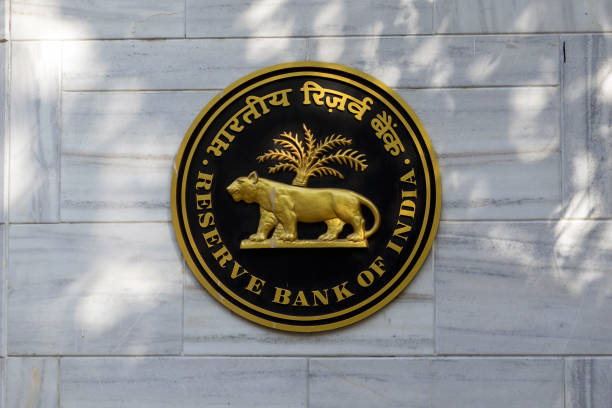Why India’s Risk Professionals Must Move from Reporting to Readiness
As FY25 unfolds, India’s financial institutions are being tested not only by market volatility, but by regulatory transformation, global macro shifts, and the growing digital complexity of the businesses they serve. Risk management, once confined to quarterly compliance reviews, is now a strategic function that must interpret uncertainty, simulate shocks and enable smarter decisions.
With that in mind, here are three urgent risk trends every risk leader, treasury head and regulator should be tracking this fiscal year each directly shaping the capabilities that institutions will need to build or strengthen.
1. Risk Must Go Real-Time
In January 2025, the Reserve Bank of India (RBI) rolled out a mandate requiring banks and NBFCs to update borrower credit records every 15 days. On the surface, this sounds like a data hygiene improvement. But it signals something deeper: risk measurement is moving toward real-time systems.
This shift is also visible in the RBI’s latest directives on fraud detection, which call for integrated Early Warning Signal (EWS) frameworks and tighter tech audits. From NBFCs to cooperative banks, institutions are being asked not just to know their exposure, but to monitor it as it evolves.
This is a major culture shift for India’s financial system. Risk teams must now operate in data environments that resemble trading desks interpreting anomalies, alerting business lines and recalibrating assumptions continuously.
The biggest challenge? Most mid-office risk professionals were trained for batch-mode compliance, not API-based analytics.
In FY25, risk functions must start building “always-on” monitoring capabilities:
- Cloud-enabled data pipes
- Streaming analytics for VaR, liquidity gaps, and fraud triggers
- Interactive dashboards linked to treasury, credit, and operations
This also implies a critical upskilling mandate. Institutions must train risk teams to not only read dashboards but understand the underlying models and act on them in real time.
2. Scenario Analysis Goes Strategic
Stress testing in India is no longer an annual regulatory drill. It’s rapidly becoming a core strategic tool.
In its June 2025 Financial Stability Report, the RBI stress-tested over 150 NBFCs alongside banks under baseline and adverse conditions. It found that GNPA levels could rise significantly under macroeconomic shock scenarios underscoring how exposed balance sheets remain to external volatility.
But what matters more than the numbers is the nature of the scenarios being tested.
We’re entering the age of hybrid stress testing:
- Traditional macro shocks (interest rate hikes, currency slippage)
- New dimensions like climate risk, cyber shocks and geopolitical tail events
- Reverse stress testing: exploring the minimum condition that can break the system
In FY25, the RBI is also expected to release guidelines on climate stress scenarios for financial institutions. Meanwhile, boards are asking risk teams for bespoke “what if” models: What if El Nino disrupts agri-loans in Maharashtra? What if China devalues its currency in Q3?
These aren’t hypothetical anymore they’re boardroom conversations.
That makes advanced scenario analytics essential, not optional.
Risk professionals must now master both simulation tools and scenario design logic. The ability to explain a five-variable shock to senior management is as important as running it.
3. Credit Risk Modelling Gets a Mandate
India’s credit markets are undergoing a silent but profound shift. The RBI’s draft guidelines on model risk management, released in August 2024, formally bring PD, LGD, and EAD models under the regulatory spotlight.
At the same time, India’s long-awaited move to an Expected Credit Loss (ECL) framework is on the horizon. This means that lenders especially those with MSME-heavy books or unsecured portfolios must adopt forward-looking credit models.
FY25 will accelerate this transformation:
- Credit teams must ingest borrower-level digital data (e.g., GST filings, bank statements)
- Models must reflect macroeconomic conditions and be stress-tested
- Institutions must build internal capacity for CreditVaR, scorecard validation, and migration analysis
The real gap? Most lenders have volumes of data, but very little interpretation.
As model governance expectations rise, BFSI firms will be under pressure to validate assumptions, monitor drift, and align provisioning with predictive accuracy. This requires building cross-functional talent pools where data scientists and credit analysts work hand-in-hand.
For institutions that get it right, smarter credit analytics can unlock better capital efficiency, sharper pricing, and lower default rates.
Readiness Is the New Risk Management
Each of these trends real-time monitoring, scenario analytics, and advanced credit modelling point to one undeniable truth: risk in FY25 is a moving target.
What was considered adequate six months ago may now be obsolete. Static frameworks and once-a-quarter dashboards no longer suffice in a world where shocks can escalate in days.
This isn’t just a technology story it’s a talent story.
The institutions that emerge stronger this year will be those that invest in structured learning, equip their teams to interpret complex risk, and embed analytics in decision-making at every level.
At Amanha Idealabs, our Financial Risk Analytics Masterclass (July 23–24, 2025 | Mumbai) is designed to help BFSI professionals upskill in exactly these areas market risk modeling, liquidity analytics, scenario design, credit risk simulation and strategic reporting.
Because in FY25, risk isn’t what happens after the crisis it’s what you prevent before it hits.











